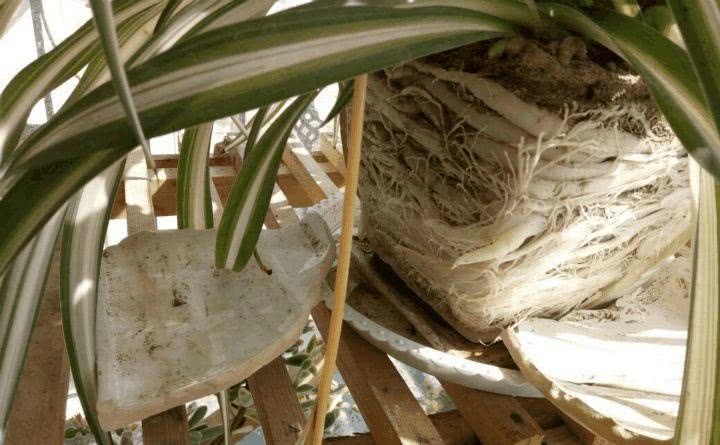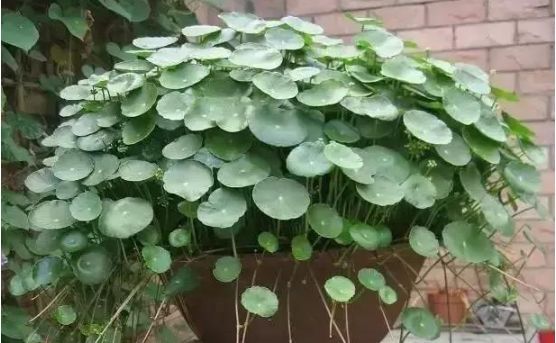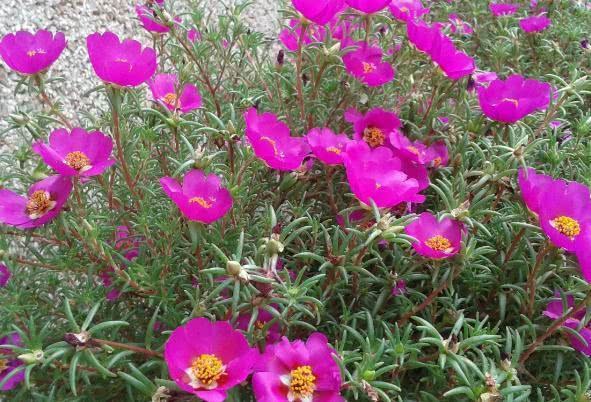A hanging orchid revealed 80 cubs. How on earth did you raise the explosion pot with white root?

Huahua visited the neighbor's house on the weekend and found that her hanging orchid was about to grow into a waterfall! One branch was covered with small orchids, and the neighbor said that one directly burst the basin. Huahua hurriedly asked for her secret book on growing flowers. Let's move on.
The hanging orchid is so raised in summer, the leaves are thick and not dry!
1. Scattered light environment
The hanging orchid is more shady, but if you want the hanging orchid to grow prosperous, it is best to put it in an environment with enough scattered light, so that its leaves are not easy to break brittle and grow more prosperous!
2. Maintain humidity with multiple sprays
Hanging orchids are usually watered every 2-3 days in summer, and flower friends can increase or decrease the watering frequency according to the difference of their own environment. In order to prevent the leaf tip of the hanging orchid from drying up, we must spray water to the leaves of the hanging orchid.
Feed it often, and the branches of the orchid are full of cubs!
In summer, hanging orchids often dry yellow leaves, in addition to often spray water to the leaves, often feed some fertilizer, will also reduce the phenomenon of yellow leaves.
1. Feed some rice washing water frequently.
Hanging orchid like humus-rich soil, do not change the soil for a long time, the soil fertility is not enough, at this time can be irrigated 1-2 times a month of mature Amoy rice water, hanging orchid leaves will be wider and thicker.
2. Water it with vinegar
Cymbidium likes the acidic soil, while the northern soil is alkaline, which is easy to harden after long-term hard water. Water 50 times with white vinegar, once a month, the orchid is not yellow leaves, but also can shout cubs.
3. Feed a handful of soybeans regularly
Only when there is enough nitrogen fertilizer can the orchid grow. Seal the cooked soybeans in a plastic bottle and ferment them in a cool and ventilated place for half a month. After the fermentation is ripe, bury a few grains in the flowerpot every month.
Sprinkle the eggshell in the basin and burst the pot with white root.
Eggshell is rich in calcium, which can supplement the nutrition needed for the growth of Cymbidium. Moreover, adding eggshell to the soil can also play the role of permeating water and air to prevent stagnant water and rotting roots.
1. Collect the leftover eggshells, rinse the egg whites and dry them in the sun for 1-2 days.
2. Put the dried eggshell in a plastic bag and break it gently.
3. Heat the pan, pour into the egg shell and stir-fry over medium heat until golden brown, which is conducive to the full release of calcium from the egg shell.
4. collect the fried eggshell and dig a few small holes in the basin to bury the eggshell. The small hole is as far away from the root as possible so as not to burn the root.
Cut 1 knife with a cruel heart, and change 1 pot of hanging orchid into 100 pots!
After 2-3 years of maintenance, it will be found that small orchids grow on the elongated branches. These small hanging orchids can not be ignored, this is the magic weapon of changing a basin into a hundred pots.
1. After the small hanging orchid grows, don't cut it off in a hurry. Usually spray water around the small hanging orchid, after a few days will find that the bottom of the small hanging orchid grew a sturdy air root. At this time, cut off to breed, the survival rate will be higher.
2. Hydroponic culture is recommended for cuttage of Cymbidium in summer, and the rooting speed is faster. The small orchid was treated before cutting, and the bottom leaves and blackened stems were removed, which will basically rot and affect the water quality in hydroponic culture.
3. Put the treated small orchid into a hydroponic bottle, and the root is flooded, but the leaves should not be flooded.
4. Put the aquaculture bottle in a cool and ventilated place, avoid the direct sun, change the water once a week, and after a period of time you will find that the hanging orchid has a long white root!
5. Convert the rooted hydroponic orchid into soil culture, and you can have 100 pots on the edge of one pot!
Hanging orchids are really good-looking and easy to maintain.
One basin becomes a hundred pots with ease!
What do the flower friends' hanging orchids look like?
Welcome? Show your hanging orchid!
- Prev

Copper grass is not growing well? With its leaves, the leaves are greener than the palm.
Copper money grass looks very small, one flower, very good-looking, and the name implies good, many people will raise some at home, but also very easy to live, give some sunshine and water, can grow very good, vitality, even if cut off.
- Next

Sunflower grafted Portulaca oleracea L. in the first half of the year, the woody flowers are so beautiful.
Sunflower is a very interesting flower, it is an annual herb, so it is impossible for him to grow into an old pile, it can't grow into a Laozhuang sunflower, its flowers can't grow much and can't bloom.
Related
- Wuhan Hospital Iron Tree Blooming Result Was Instantly Frightened by the Gardener Master
- Which variety of camellia is the most fragrant and best? Which one do you like best?
- What is the small blue coat, the breeding methods and matters needing attention of the succulent plant
- Dormancy time and maintenance management of succulent plants during dormancy
- Minas succulent how to raise, Minas succulent plant pictures
- What are the varieties of winter succulent plants
- How to raise succulent plants in twelve rolls? let's take a look at some experience of breeding twelve rolls.
- Attention should be paid to water control for succulent plants during dormant period (winter and summer)
- Watering experience of twelve rolls of succulent plants
- Techniques for fertilizing succulent plants. An article will let you know how to fertilize succulent plants.

